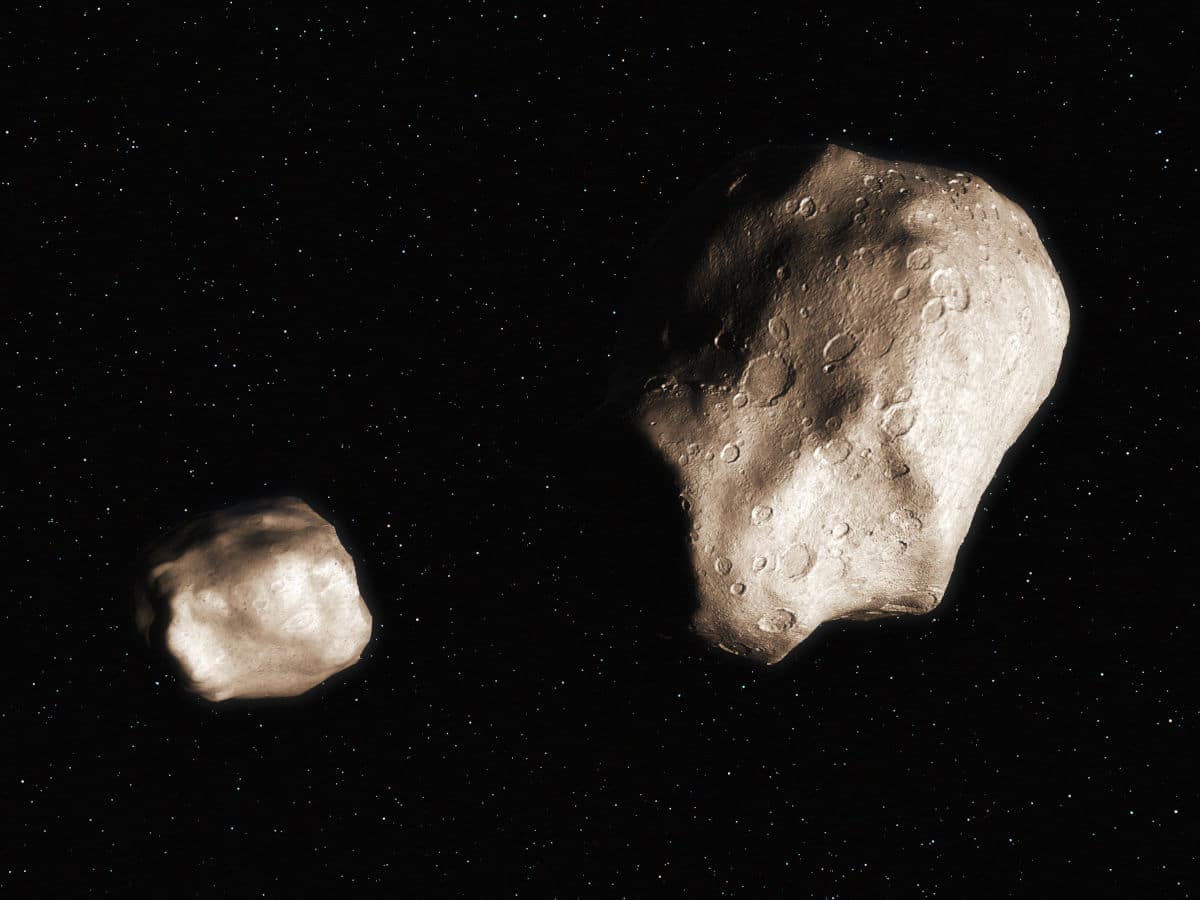
Astronomers have observed two asteroids separated from each other only about three centuries ago. The blink of an eye, by astronomical standards.
Our solar system has millions of asteroids, the majority of which orbits around the sun between the planets Mars and Jupiter. Sometimes there are two copies in between that are so similar, both in trajectory and composition, that they must have once been one object.
A team of Czech, Italian and American astronomers describes in a new scientific article the youngest asteroid pair to date: 2019 PR2 and 2019 QR6. That must have arisen only three hundred years ago, the astronomers say. This makes the pair more than ten times younger than other known pairs of asteroids. But what kind of mother did they have?
Same parent
Both asteroids were discovered in August 2019: 2019 PR2 by the PanSTARRS telescope on Hawaii, 2019 QR6 by the Catalina Sky Survey in the US state of Arizona. A month later, it became apparent that they were flying in formation, spaced about a million kilometers apart. (In other words: about two and a half times the distance from Earth to Moon).
Subsequent observations subsequently revealed that the two objects have very similar surfaces. “It is clear that 2019 PR2 and 2019 QR6 are from the same parent and it is no coincidence that their orbits are so similar,” said Czech astronomer Petr Fatka, one of the researchers behind the study, in a statement. press release†
Old observations, from 2005, also showed the two asteroids. That extra information allowed the astronomers to determine with great accuracy how 2019 PR2 and 2019 QR6 must have moved around the sun for the past several hundred years, and how they will do so in the coming centuries.
Mystery
The only question is: how did 2019 PR2 and 2019 QR6 ever come to be? In most asteroid pairs, the original asteroid started spinning faster and faster due to sunlight. At one point even so fast that the object fell apart into two or more smaller pieces. However, that scenario is inconsistent with the fact that the pair of asteroids discovered in 2019 only arose a few hundred years ago.
An alternative is that they are debris from a comet; a ‘dirty ice ball’. Because comets emit gases, they move differently from asteroids. If you take that effect into account, then 2019 PR2 and 2019 QR6 could have been separated from each other about three hundred years ago.
“But both objects now show no signs of comet-like activity,” said Nicholas Moskovitz of the Lowell Observatory in the US, also a member of the team. “So it remains a mystery how they go from a single object into two active objects, and then into two.” not-active objects may have changed.”
Source material:
†Youngest Pair of Asteroids in Solar Systems detected” – Lowell Observatory
†Recent formation and likely cometary activity of near-Earth asteroid pair 2019 PR2 — 2019 QR6” – ArXiv.org
Image at the top of this article: ESO/M.Kornmesser/L. calcada